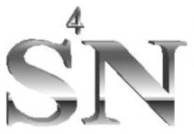
Wavelength coverage is 362-1044 nm for the northern stars (observed from
McDonald Observatory) and 362-921 nm for the southern stars (observed from La
Silla).
The data are offered only
in FITS format.
3dfits
This is the preferred format, as it involves less
manipulation than 1dfits and includes an estimate of the error bars.
Three vectors that contain
- wavelengths (Å)
- normalized flux
- error bars
are stacked together. The data are in double precision and have not
been interpolated after extraction and merging of the different orders.
Each file contains a simple header and a 3 x n
matrix, where n is ~ > 1e5. These files are named HIP*.fits.
- IRAF works well with FITS files, although many tasks for handling
spectra (such as 'splot') expect the wavelength scale to be coded in the
header. If you want to use some of those tasks, you will likely prefer
the 2nd format we offer, 1dfits.
- The IDL astronomy library (http://idlastro.gsfc.nasa.gov/homepage.html)
includes several routines to read FITS files. You may use, for
example,'readfits' or 'mrdfits' as follows:
IDL>d=readfits('HIP171.fits',hd)
IDL>help,hd,d
D
DOUBLE = Array[3, 133257]
HD
STRING = Array[9]
or
IDL>d=mrdfits('HIP171.fits',0,hd)
IDL>help,hd,d
D
DOUBLE = Array[3, 133257]
HD
STRING = Array[9]
- Tools to handle FITS files in FORTRAN, C, Perl, MatLab, Python,
and other languages are available (
http://fits.gsfc.nasa.gov/fits_libraries.html).
1dfits
This is also standard FITS format, but with only one vector
in double precision that contains the normalized flux. These spectra
have been resampled to 0.01 Å/pix by means of
pseudo-cubic splines interpolation. These files have been named
HIP*.ms.fits. Two keywords in the header give the initial wavelength
(CRVAL1 - always 3620.0) and the wavelength step (CDELT1 - always 0.01),
both in Å. Our tests show that the errors introduced
by the interpolation are generally negligible. 1dfits files are
somewhat larger than the 3dfits files (due to oversampling). The naming
convention is HIP*.ms.fits
- These files work just fine with IRAF tasks such as 'splot' or
'scopy'.
- The IDL astronomy library (http://idlastro.gsfc.nasa.gov/homepage.html)
includes several routines to read FITS files. You may use, for
example,'readfits' or 'mrdfits' as follows:
IDL>d=readfits('HIP171.ms.fits',hd)
IDL>help,hd,d
D
DOUBLE = Array[682001]
HD
STRING = Array[11]
or
IDL>d=mrdfits('HIP171.fits',0,hd)
and you can reconstruct the wavelengths' vector
IDL>w=findgen(n_elements(d))*0.01+3620.
- Tools to handle FITS files in FORTRAN, C, Perl, MatLab,
Python, and other languages are available (http://fits.gsfc.nasa.gov/fits_libraries.html).










